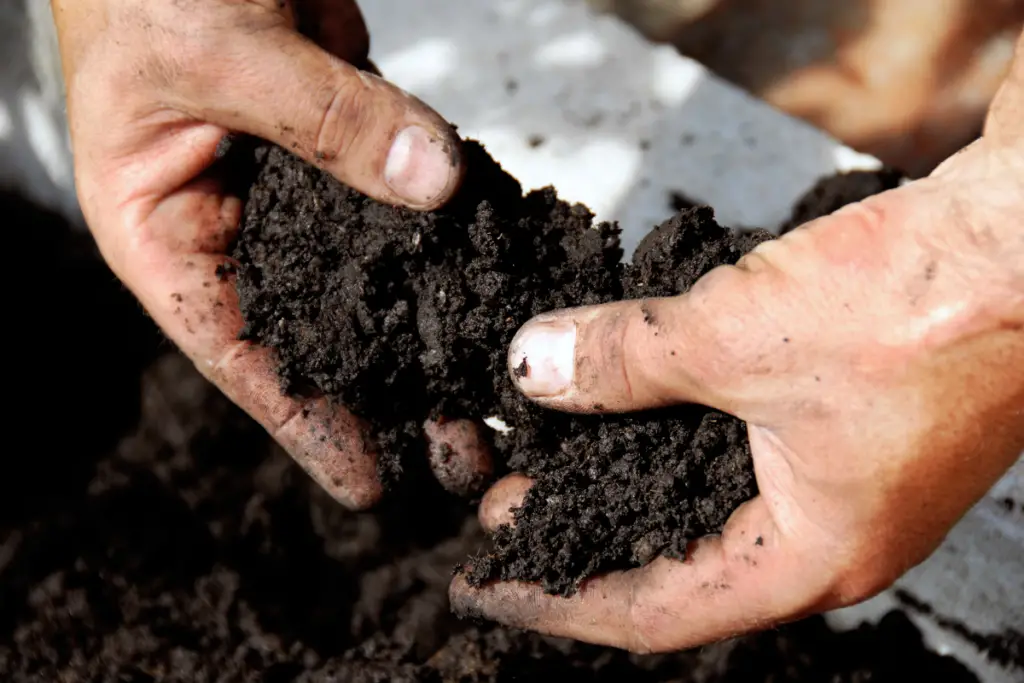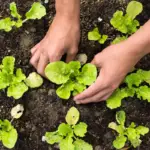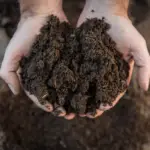Soil is an essential component of agriculture and gardening. It provides nutrients and a foundation for plants to grow. However, not all soils are created equal when it comes to holding water.
The ability of soil to retain water depends on various factors such as soil composition, texture, and structure.
Clay soil is known to hold the most water among the different types of soil.
The fine particles of clay soil provide a large surface area, which allows it to hold more water than other soil types. However, clay soil also drains slowly, which means it can retain too much water and become waterlogged.
On the other hand, sandy soil drains quickly, which means it cannot hold much water and can become dry quickly.
Loamy soil, which is a mixture of sand, silt, and clay, is considered the ideal soil for holding water since it has a balance of drainage and water retention.
Understanding which soil holds the most water is essential for gardeners and farmers to ensure that their plants receive enough water.
By selecting the right soil type and implementing proper irrigation techniques, plants can thrive and produce healthy yields.
In the following sections, we will delve deeper into the different factors that affect soil water retention and explore ways to improve water retention in soil.

Table of Contents
Understanding Soil Types
When it comes to understanding which soil holds the most water, it’s important to first understand the different types of soil and their characteristics.
There are six main types of soil: sandy soil, clay soil, silt soil, peat soil, chalk soil, and loamy soil.
Each type of soil has a different texture and composition which affects its ability to hold water.
Sandy Soil
Sandy soil is made up of larger particles and has a gritty texture. This type of soil drains quickly and doesn’t hold water well.
Sandy soil is ideal for plants that require good drainage and don’t need a lot of water.
Clay Soil
Clay soil is made up of very small particles and has a smooth texture. This type of soil holds water well but drains slowly.
Clay soil is ideal for plants that require a lot of water and don’t tolerate drought well.
Silt Soil
Silt soil is made up of medium-sized particles and has a silky texture. This type of soil holds water well but doesn’t drain as well as sandy soil.
Silt soil is ideal for plants that require moderate amounts of water.
Peat Soil
Peat soil is made up of partially decomposed organic matter and has a spongy texture. This type of soil holds water very well but can become waterlogged if not drained properly.
Peat soil is ideal for plants that require a lot of water and don’t tolerate drought well.
Chalk Soil
Chalk soil is made up of small particles and has a rough texture. This type of soil drains well but doesn’t hold water as well as clay soil.
Chalk soil is ideal for plants that require good drainage and don’t need a lot of water.
Loamy Soil
Loamy soil is a mixture of sand, silt, and clay particles and has a balanced texture. This type of soil holds water well but also drains well.
Loamy soil is ideal for a wide range of plants as it provides a good balance of water retention and drainage.
Water Retention in Different Soils
Different types of soil have varying abilities to retain water. The size of the soil particles plays a significant role in determining how much water the soil can hold.
Generally, soils with smaller particles can hold more water than those with larger particles.
According to studies, clay soil has the highest water retention capacity.
This is because clay particles are smaller than silt or sand particles, giving them more surface area and more pores to hold water. However, clay soil also drains slowly as it holds water more tightly in its tiny pores.
Loam soil, which is a mixture of sand, silt, and clay, also has good water retention capacity. Loam soil is well-draining and can hold water while still allowing for proper drainage.
Sandy soil, on the other hand, has poor water retention capacity due to its large particles.
Water passes through sandy soil quickly, making it difficult for plants to absorb enough water.
Silt soil falls somewhere in between clay and sandy soil in terms of water retention.
It has larger particles than clay soil but smaller particles than sandy soil, allowing it to hold more water than sandy soil but less than clay soil.
It is important to note that soil water retention capacity can also be affected by factors such as organic matter content, soil structure, and compaction.
Therefore, it is essential to choose the right soil type for specific plants and to maintain proper soil health for optimal water retention.
Factors Affecting Water Holding Capacity
Water holding capacity is the amount of water that soil can retain after excess water has drained away.
This is a critical characteristic of soil because it affects plant growth, water availability, and nutrient availability.
The following factors affect the water holding capacity of soil:
Soil Texture
Soil texture is the relative proportion of sand, silt, and clay particles in soil.
Sandy soils have larger particles and larger pore spaces, which means they have lower water holding capacity.
On the other hand, clay soils have smaller particles and smaller pore spaces, which means they have higher water holding capacity.
Silt soils fall somewhere in between sandy and clay soils.
The following table shows the water holding capacity of different soil textures:
| Soil Texture | Water Holding Capacity |
|---|---|
| Sandy | Low |
| Loamy | Medium |
| Clay | High |
Soil Structure
Soil structure refers to the arrangement of soil particles into aggregates or clumps.
Soil with good structure has large pore spaces between aggregates, which allows water to move freely through the soil.
Soil with poor structure has small pore spaces, which can lead to waterlogging and reduced water holding capacity.
The following table shows how different soil structures affect water holding capacity:
| Soil Structure | Water Holding Capacity |
|---|---|
| Granular | High |
| Blocky | Medium |
| Prismatic | Low |
Organic Matter Content
Organic matter is the decaying remains of plants and animals in the soil.
Soil with high organic matter content has larger pore spaces, which increases water holding capacity.
Organic matter also improves soil structure, which further enhances water holding capacity.
The following table shows how different levels of organic matter affect water holding capacity:
| Organic Matter Content | Water Holding Capacity |
|---|---|
| Low | Low |
| Medium | Medium |
| High | High |
Testing Soil Water Retention
Testing the water retention of a soil can be done using a variety of methods. One of the most common methods is the pressure plate apparatus.
This apparatus consists of a metal plate and a porous ceramic plate separated by a rubber seal.
The soil sample is placed on the ceramic plate, and water is added to the metal plate.
As the water is added, pressure is applied to the soil sample, and the amount of water held by the soil is measured.
Another method is the hanging column method. In this method, a soil sample is placed in a column and water is added to the top of the column.
The soil is allowed to equilibrate with the water, and the amount of water held by the soil is measured.
A third method is the centrifuge method. In this method, a soil sample is placed in a tube and spun in a centrifuge.
As the tube spins, water is forced out of the soil, and the amount of water held by the soil is measured.
Regardless of the method used, it is important to ensure that the soil sample is representative of the soil being tested.
This means that the sample should be taken from a depth that is representative of the soil profile and that the sample should be large enough to be representative of the area being tested.
It is also important to note that the water retention of a soil can be affected by a variety of factors, including soil texture, soil structure, and the presence of organic matter.
Therefore, it is important to consider these factors when interpreting the results of any water retention test.
Implications for Agriculture and Gardening
Knowing which types of soil can hold the most water is crucial for agriculture and gardening.
Farmers and gardeners need to maximize water retention in their soil to ensure healthy crop growth.
Soils with high clay content tend to hold the most water, while sandy soils have a lower water-holding capacity. However, it is important to note that soil texture is not the only factor that affects water retention.
Soil structure, organic matter content, and compaction also play a role in determining how much water a soil can hold.
In agriculture, farmers can use conservation agriculture practices to improve water holding capacity and buffer soil resilience against climate change.
These practices include minimum mechanical soil disturbance, crop diversification, and soil mulch cover/crop residue retention.
By increasing soil organic carbon and altering pore size distribution, conservation agriculture practices can improve soil water holding capacity.
In gardening, adding organic matter such as compost to soil can improve its water-holding capacity.
Additionally, using mulch on top of soil can help to retain moisture. Gardeners can also choose to plant crops that are well-suited to their soil type to optimize water usage.
Conclusion
In conclusion, the type of soil that holds the most water is clay soil.
Clay soil has smaller particles than silt or sand soil, which gives it more surface area, more pores, and thus more ability to hold water. However, clay soil also drains slowly since it holds water more tightly in its tiny pores.
On the other hand, sandy soil holds the least amount of water. Sandy soil is composed of larger particles and has little ability to hold onto water molecules.
Loamy soil, which is a mixture of clay, sand, and silt soil, is considered the best type of soil for gardening since it holds water well but also drains well.
It is important to note that the ability of soil to hold water also depends on its organic matter content.
Soil with high organic matter content can hold more water than soil with low organic matter content.
Therefore, adding organic matter to soil can help improve its water-holding capacity.
- How to Dry Basil Leaves: A Professional Guide
- Is an Avocado a Fruit or Vegetable? Simple Answer and Explanation
- Does Pineapple Have Seeds? Exploring the Anatomy of Pineapples
- Blooming Through Winter: Can I Grow Vegetables Indoors in the Winter?
- What Can You Grow in a Greenhouse All Year Round: A Guide to Year-Round Greenhouse Gardening
- Are Blueberries Blue? Debunking the Myth of Their Color
















